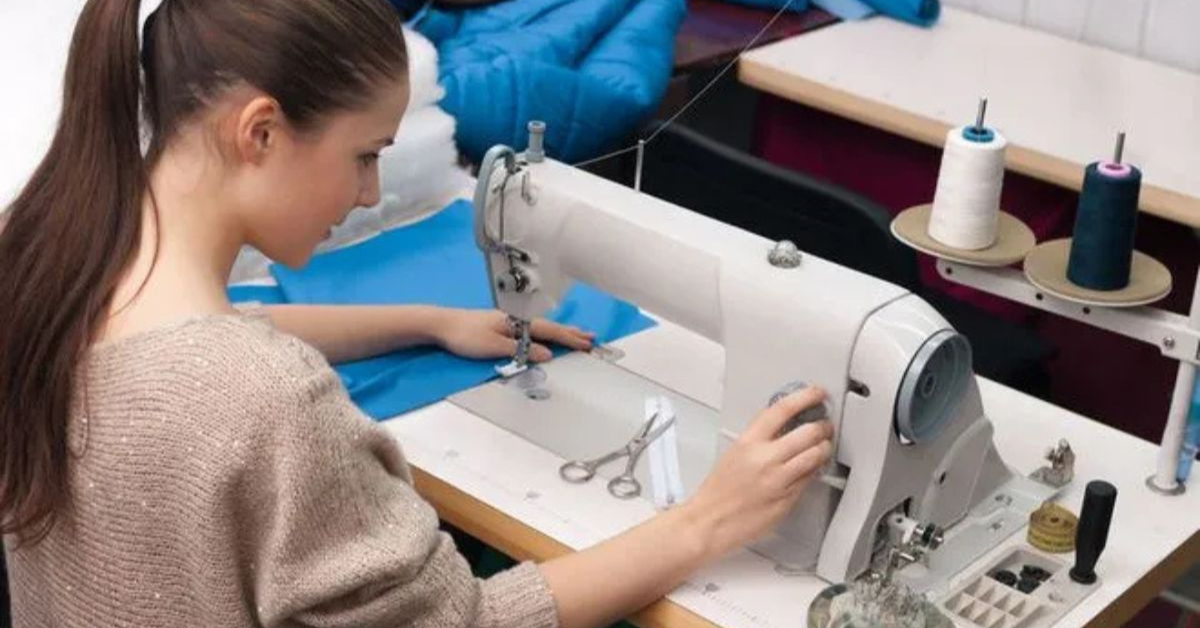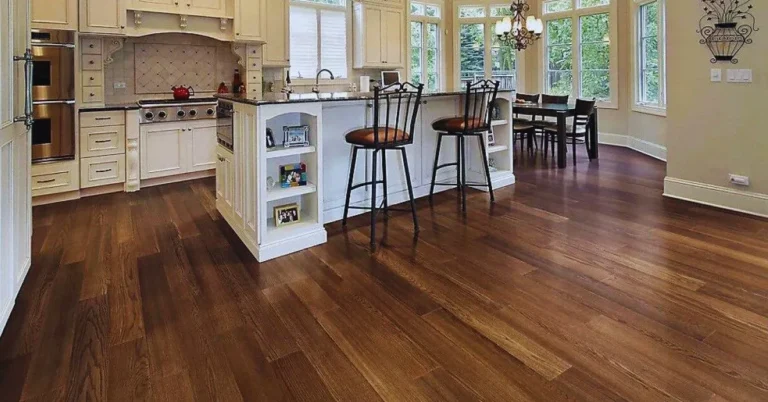Nahttypen: A Guide to the Various Types of Seams in Sewing
Sewing is a fundamental art that is both technically demanding and creative. Whether you are sewing plain trousers or creating a complex dress, one of the key components of the process is selecting the proper seam type, or “Nahttypen.” A seam is the foundation of any sewing project, keeping fabric intact and offering both stability and durability. Various seams are used for different applications, and it is vital to know when to employ each seam to obtain professional standards.
In the following article, we discuss the most popular Nahttypen (seams) and their use, as well as the tips on how to apply them on different types of fabric. If you understand the various types of seams, you will be able to advance your sewing expertise and produce items that are both functional and beautiful.
Simple Seam (Geradstich)
The simple seam or straight seam is the most fundamental seam type and provides the basis for the majority of sewing endeavors. It consists of sewing two pieces of material together with a straight stitch along the edges. This seam is well suited for simple, uncomplicated tasks and is usually utilized by beginners because it is easy to do.
How to Create:
Place the fabric edges right sides together.
Sew in a straight stitch through the fabric, creating an even allowance for the seam.
Uses:
Everyday clothing such as shirts, dresses, and skirts.
Effective on most woven materials like cotton, linen, and denim.
Advantages:
Simple to sew, even for novices.
Creates a strong and long-lasting seam when sewn with the proper allowance for the seam.
The simple seam is the most popular choice for most everyday projects, and every sewist should master this fundamental seam.
2. French Seam (Französische Naht)
The French seam provides a tidy, professional finish and is favored for use in dainty fabrics such as chiffon, silk, and lightweight cotton. It buries the raw edges of the fabric within the seam, avoiding fraying and providing a crisp, polished appearance on both sides.
How to Create:
Sew the fabric with the wrong sides facing.
Cut the seam allowance close and turn the fabric, and re-sew the seam with right sides facing in order to cover up the raw edges.
Uses:
Sheer and lightweight fabrics such as chiffon, silk, and organza.
Clothing where both sides are going to show, e.g., blouses, skirts, and dresses.
Advantages:
Creates a clean finish with no visible raw edges.
Suitable for delicate fabrics, making the garment stronger and look better.
The French seam is particularly ideal for making clothes where appearance and neatness matter, as it provides a luxurious and elegant appearance to any type of garment.
Flat-Felled Seam (Kappnaht)
The flat-felled seam is a robust, long-lasting seam that can be used for heavy-duty fabrics such as denim, canvas, and other heavy materials. It not only sews two pieces of fabric together but also covers the raw edges, thus being a great option for garments that will experience significant wear and tear.
How to Make It:
Sew the fabric with the right sides facing each other.
Trim one of the seam allowances and fold the other over it.
Stitch the fold in to trap the raw edges.
Uses:
Workwear pieces such as jeans, jackets, and shirts.
Heavyweights that need additional strength, e.g., canvas or denim.
Advantages:
Strong and robust, ideal for stress areas.
Gives a flat finish on both sides, which is aesthetically pleasing and useful.
The flat-felled seam is especially useful in clothing requiring withstanding physical effort, providing strength and a neat finish.
Overlock Seam (Overlocknaht)
Overlock seam is a method usually employed using an overlock machine, cutting the edges of the fabric as it sews them. Overlock seam is critical in closing raw edges, particularly on knit clothing or other stretching fabrics.
How to Make:
Sew fabric using an overlock machine, cutting the edges and completing the seam at the same time.
You can also employ a zigzag stitch on a standard sewing machine if you do not have an overlock machine.
Uses:
Stretches like t-shirts, leggings, and sportswear.
Knit fabrics where flexibility and ease of movement are required.
Advantages:
Holds the fabric from fraying and gives a stretchy, long-lasting finish.
Perfect for knitwear that must be flexible and able to move.
The overlock seam is essential for most projects, particularly when using stretchy fabric because it enables the garment to stretch without compromising the seam.
Zippered Seam (Reißverschlussnaht)
For the insertion of a zipper, a zippered seam comes in handy for having a clean, functional finish in garments such as dresses, skirts, and trousers. This process is about carefully inserting the zipper and making sure the seams perfectly align both in terms of look and functionality.
How to Make:
Sew the seam to where the zipper will be inserted.
Zipper up the zipper, then finish the seam on either side of the zipper.
Uses:
Clothes that have a zipper, like dresses, skirts, and coats.
Often utilized in fashion styling for making dressed items.
Advantages:
Necessary when making garments needing a working zipper closure.
Provides a clean, accurate finish when properly installed.
Zipper seams are necessary for insuring zippers go in the correct position and operate smoothly in many different kinds of garments.
Piped Seam (Paspelnaht)
A piped seam is a finishing technique applied to enhance a tailored appearance on garments and upholstery projects. It entails putting piping (a cord or trim) between two pieces of fabric, which lends interest and definition to the seam.
How to Do:
Insert piping between fabric layers and sew it down.
The piping is sewn along the seam edge to produce a businesslike, finished appearance.
Uses
Upholstery, pillows, and home furnishings such as cushions.
Clothing such as dresses, jackets, and pants for decorative purpose.
Advantages:
Provides a decorative finish and professional look.
Increases the strength of seams in high-stress areas.
Blind hem stitched seams are commonly utilized on tailored clothing and home furnishings to provide a shaped, tidy appearance.
Blind Hem (Blindstitch)
The blind hem is a sewing method to hem an article of clothing so that the stitching is not visible from the front. This comes in particularly handy when sewing with sensitive materials or if you wish to have a neat, professional finish on hems.
How to Make:
Make use of a blind hem stitch on your sewing machine, with barely a few threads take up the fabric.
Most of the hem is invisible from the front.
Uses:
Skirts, trousers, dresses, and any other piece of clothing that needs a concealed hem.
Perfect for formal garments and quality clothing.
Advantages:
Accomplishes a clean, concealed hem that is ideal for formal and business clothing.
Perfect for fragile fabrics where you don’t want stitching to be visible.
The blind hem stitch guarantees that your hems remain invisible, keeping your clothes looking smooth and clean.
Conclusion
Knowing the different Nahttypen or seam types is central to getting professional-level outcomes in your sewing projects. From the most basic straight seam to the more sophisticated French and flat-felled seams, every one has its own use, and selecting the appropriate one is important to guaranteeing the durability and visual appeal of your work.
By learning these various types of seams, you will be proficient in working with a range of fabrics and projects, from basic garments to complex designs. Whether sewing as a career or for personal enjoyment, understanding which type of seam to use will help improve the quality of your work and see your creations last.
FAQs
What is the simplest seam used in sewing?
The most primitive of seams is the straight seam, sewn by joining two pieces of cloth with a straight stitch.
When do I use a French seam?
Use a French seam on sheer fabrics such as silk or chiffon, particularly when both sides of the fabric will be exposed.
How do I finish raw edges without an overlock machine?
You can reinforce raw edges with a zigzag stitch, pinking shears, or bias binding.
Why is a flat-felled seam used?
Flat-felled seams are suitable for heavy fabrics such as denim and workwear, as they provide strength and avoid fraying.
How do I make a blind hem?
This blind hem is created with a blind hem stitch, which only seizes a little bit of the material, causing the rest of the hem to be invisible from the front.







